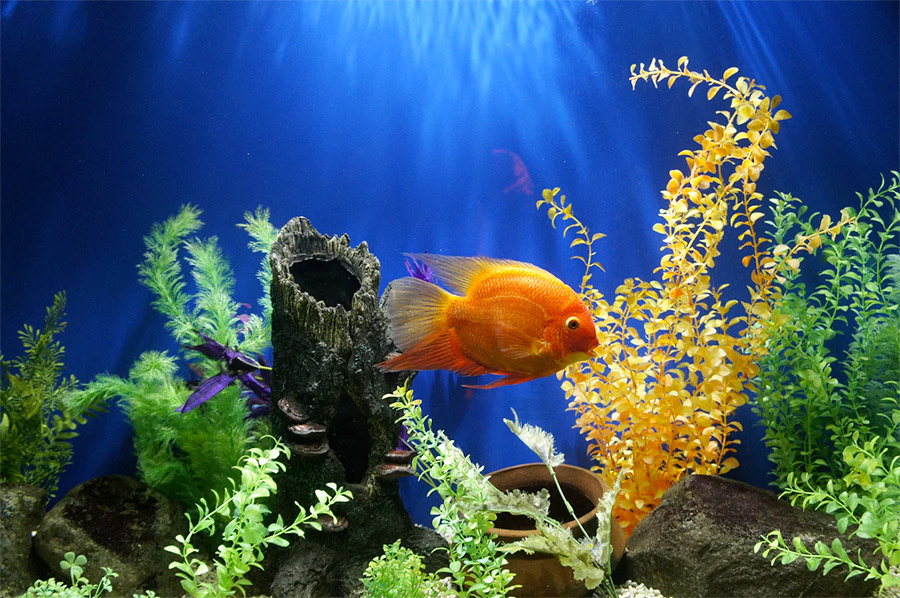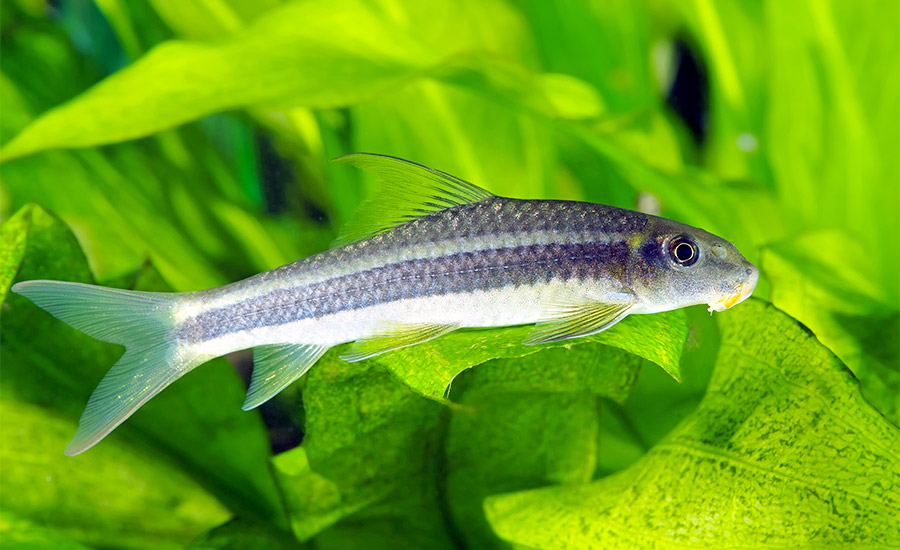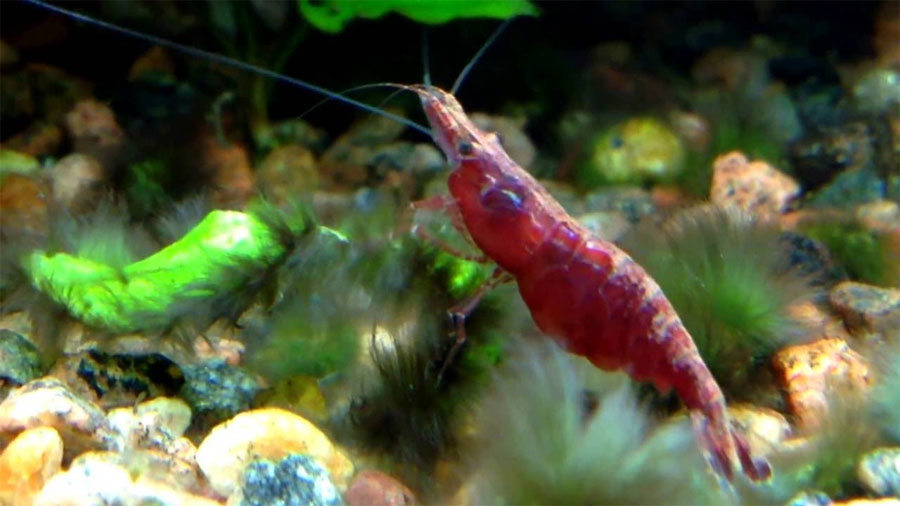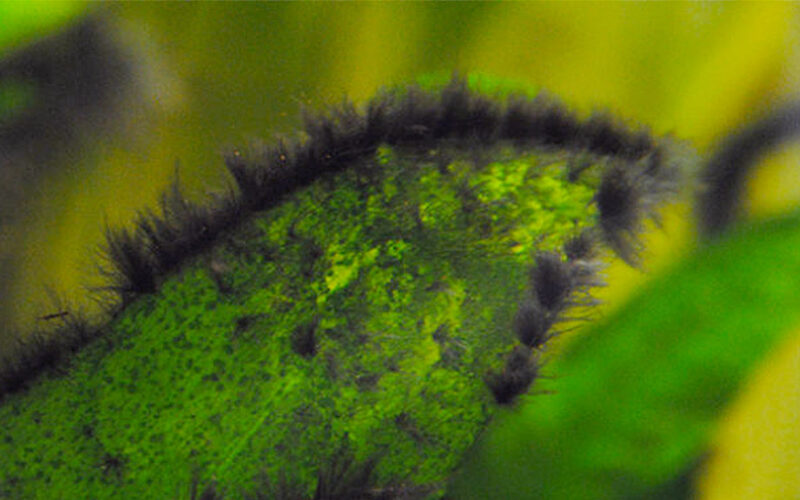It is named after what it looks like, black beard algae (BBA) is certainly just like a scruffy black beard. Despite the look and how it is named, BBA is a family member of the red algae. This fact will be shown as it turns red when it dies. Though considered to be saltwater algae, you have probably seen it plague in your freshwater or fish tanks.
It is quite easy to identify the algae in your aquarium, because it may grow on any surface, including the filter pipes, driftwood, rocks, and substrate. In healthy conditions, its color ranges from a bright green, dark green, sometimes blue-green to blackish green, or browny gray to black. These algae start to cling out as small spots of fuzz on any surface in your fish tanks and soon grow into dense and bushy hair.
So, how to remove black beard algae? Well, you may find it challenging to remove it from your fish tank because it is a kind of stubborn plague that can grow uncontrolled and spread too fast. Though it is not dangerous at all to fish or shrimp, and other animals, it is to the plants. Before you tear your aquascape down to start over, you should learn the common causes of why the algae grow in your fish tanks.
In most cases, it appears when something goes wrong in your tank, which creates the perfect environment for the algae to grow and will continue spreading. If it grows on your plants and leaves unintended, it may completely cover the plant and block out the light that your plants need.
These soft and slippery algae are also called brush algae. It clings tenaciously to any surfaces in your tank, especially plants. The most annoying thing about it is that it cannot be removed by bare hands. Only a few fish are considered as the black beard algae eater, including Crossocheilus siamensis (the Siamese Algae Eater) and the Florida Flag Fish.
Why do Black Beard Algae grow in Your Fish Tanks?

For different reasons, the brush algae or BBA are found in densely planted aquascape as well as fish tanks with or no plants at all. Although it may magically appear and rapidly thrive, it requires certain conditions to live. These are the common causes of BBA:
1. High Water Pollution
A combination of overfeeding and few water changes may create organic water pollution. This condition may cause a buildup of muck in the filter and substrate, a perfect environment for black beard algae to grow.
2. Carbon Dioxide (CO2) System
In many cases, the lack of a CO2 system is the number one cause of beard algae. The content of free CO2, low levels of CO2, and poor water circulation in your tank are responsible for the beginning life of this algae.
If the low levels of CO2 are the case, it will take from hydrogen carbonate as a substitute for the carbon it requires. It will cause the carbon separates from the hydrogen carbonate ion and elevate the pH level. This process is called biogenic decalcification, creating precipitates of limescale (calcium carbonate), fortifying the algae cell walls, and making it harder and more unattractive to any black beard algae eater.
3. Excessive Light
Just like many algae, it loves light. The more light in your fish tank, the faster it grows and spreads. For those of you who use LED light for your planted tanks, you are helping the algae to grow as well, especially when you leave the light on for a whole day or longer periods.
If you don’t have time to manually turn the lights on and off, it is recommended to use a timer to automatically do it.
4. Contaminated Plants
Black beard algae most often appear in the tank with contaminated plants. This case mostly happens to the unattended tanks. So, if you are the “too busy” type among aquarium hobbyists, it is highly recommended to start a scheduled check-up before BBA covers the entire plant surface or even take over every surface in your aquarium.
How to Remove Black Beard Algae Once and for All

It is not harmful at all to fish, shrimps, snails, and other animals in your aquarium. But you have good reasons to eliminate it once and for all, such as:
- It makes your aquascape look less appealing,
- Its spreads lead to a bad change in your tank conditions due to imbalance nutrients,
- It creates an unsafe environment in your fish tank and increases the risk of your fish life,
- It gives you a harder effort to maintain the affected tank and lead to high levels of harmful chemicals and substances in your fish tank,
- Its presence can be detrimental to the live plants,
- When it covers the entire surface of your plants, it causes the failure of two important biological processes; photosynthesize and respire normally.
You cannot easily remove BBA with bare hands. So, these are the best recommendation of effective methods to eliminate BBA:
1. Cut
This simple step only works if the algae in your fish tank have just begun to appear. When you find it growing on the edge of the leaves, cut the entire leaf, and simply remove it from your tank. However, if black beard algae have grown uncontrollably, you better skip to the next method.
2. Hydrogen Peroxide (H2O2) Bath
You can use H2O2 to eliminate BBA by soaking any affected decor or plants in undiluted 3% H2O2. Soak them and rinse thoroughly using clean, fresh water. This 3-minute procedure should not take much time and is so simple to do.
3. Treat your tank with H2O2
If there are too many affected items and you are not able to remove each of them, treating your whole fish tank with H2O2 is the other practical solution. No worries, this method will not do anything harm-in any way to your fish. This is how to do it:
- Take 3% H2O2 about 10mls per 15-gallons of tank water. For better results, you can use 20 ml for a 30-gallon tank.
- Add H2O2 directly to your aquarium.
- Repeat the process once a day and continue until 3 days.
The BBA will start fading or changing color in a few days. After two weeks to one month, your tank should expect no traces of beard algae and the rest of the living creatures inside the tank will be getting back to normal and completely unscathed. However, you can also transfer them to a substitute tank while treating the original one.
4. Reduce the amount of phosphate (PO4)
Phosphates are known to be responsible as well as to the spread of black beard algae. They are a byproduct of decaying substances in your fish tank, including leftover food, plants decay, fish waste, and other organic waste. Follow these steps to regulating the PO4:
- Remove all dead plant and its materials from your tank,
- Dispose of the dead animals; fish, snails, or shrimp as soon as possible,
- Do not overfeed your fish,
- Change the water regularly.
5. Black beard algae eating fish & shrimp

Yes, it’s just as simple as adding fish to your tank and letting them work to beat the BBA problem for you. Several species of fish, shrimps, and snails can help you to reduce the number of black beards, such as:
- Amano Shrimp. Can grow up to 5 cm in size, they are algae eaters and consume BBA as well. Keep in mind that these shrimps will eat the black beard if there is no other food in the tank, and only recommended for small aquariums.
- Siamese Algae Eaters. They can grow up to 15-20 cm in size and can be territorial and aggressive if you add more than 6 of these fish in your tank.
You can also add Florida Flag Fish, Cherry Shrimp, and Ramshorn Snails. Although this black beard algae eater may not be as effective as other methods above because they cannot remove the algae completely and fast enough, they are somehow helpful.
6. Increase CO2 levels
Consider adding more live plants into your fish tanks. The high levels of carbon dioxide promote the growth of your plants. This will reduce some nutrients that algae need to thrive in your tank. Liquid carbon and carbon dioxide injection are two ways you can try to increase the level of CO2 in your tank.
7. Heat treatment
Eliminating BBA using heat is believed to be one of the best methods because you don’t need any chemicals. It is so simple to do as well:
- Take out all affected items and place them in a clean container.
- Pour boiling water into the container.
- Let them cool off.
Can You Prevent Black Beard Algae?
Yes, precisely, prevention is better than controlling and eliminating the algae. Because even though you succeed in eliminating them, there are huge chances of recurring long after. Below are a few preventive measures you can do:
- If you have new fish, make sure to quarantine them. And to prevent any parasites or diseases from spreading in your tank, ensure that the water your new fish came from is not mixed with your tank water.
- Clean every new plant with H2O2 before adding them to your aquarium. For the best results, you better first clean them using hydrogen peroxide.
- Do not allow your tank lights to stay on for a long time.
- Add more live plants.
- Perform scheduled water changes.
- Use a good filter that ensures sufficient water flow.
As an aquarium keeper, you should do the right preventive steps by making sure that your fish tank is favorable for your plants and fish, and unfavorable for black beard algae.
It is also highly advised to buy fish and plants from reputable stores which have well-established methods and protocols to prevent any transfer of parasites and disease to their customer’s aquarium.



